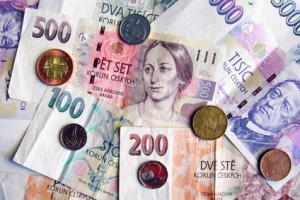Czech Koruna
Short facts about CZK – Czech Koruna
![]()
- Common names for Czech Koruna
- Countries with Czech Koruna
- Unofficial countries with Czech Koruna
- How much is traded for CZK?
- Currency symbol and ISO code
- Currency crisis with Czech Koruna
- Czech National Bank (CNB)
- Trade Czech Koruna
- History of the Commonwealth currency
- CZK Exchange Rate
- Pictures of Czech Koruna, notes
Common names for CZK
The Czech koruna (crown) is called koruna česká in the Czech language (when pluralised, koruny české). One crown is sometimes known as kaèka, (a diminutive form of koruna). The koruna is signified by the abbreviation Kč, and also written as CZK.
Countries with CZK
The Czech Republic is the only country that uses this currency. The currency should not be confused with that of Scandinavian countries, the Danish krone, the Norwegian krona and the Swedish krona.
Unofficial CZK countries
No other countries use CZK unofficially.
How much are the CZK traded?
The Czech currency (CZK) is relatively small and the koruna is not even in the top thirty of most traded currencies in 2010. The euro would be a more popular choice for traders.
Currency symbol and ISO-code
The symbol for the koruna is Kč, and the official ISO-code is CZK.
Currency crisis with CZK
The Czech Republic faced political and financial crises in early 1997, which brought about a currency crisis in May. During this time, the formerly-pegged currency moved to a floating exchange rate as investors divested themselves of CZK. Two austerity packages were introduced by the government that year and by 2000, the Czech Republic enjoyed a time of growth once more. This growth received greater stimulus following the state’s accession to the EU in May 2004.
The financial crisis of 2007 did not considerably affect the Czech Republic in relation to credit as the banks had already developed cautious credit policies in the wake of the smaller crisis of the 1990s. However, as a large exporter, particularly to the German market, the country did feel the effects of weakened trade with its EU partners.
Central Bank for CZK
The central bank of the Czech Republic, the Czech National Bank (CNB), oversees the Czech financial market and the circulation of CZK. It is an independent institution with a declared primary objective of maintaining price stability in the Czech Republic.
Trade CZK
The CZK would most commonly be traded against the euro, although trades against the US dollar would not be uncommon either.
History of the CZK
On January 1st, 1993, following the dissolution of the Czechoslovakia, two new states were formed, the Czech Republic and Slovakia. Each nation introduced its own currency, the koruna, each of which was equal to the koruna of the former Czechoslovakia. The industrialised Czech Republic soon found that its koruna (CZK) gained in value compared that of the largely agricultural Slovakia (SKK). The earliest banknotes of the CZK were simply the old Czechoslovak notes overstamped with new markings, indicating the nascent currency. Later the same year, the Czech Republic issued its own notes and coins.
It was intended that the Czech Republic would adopt the euro as its currency in 2012, but that plan was suspended in 2007. At the time it was announced that the Czechs would not join the euro until their public finance deficit reached below 1% of the Czech GDP. In 2010, Vaclav Klaus, the Czech President remarked that the Czech Republic was in no hurry to join the euro. This sentiment appears to be held by a remarkable body of opinion amongst the Czech population. Only 22% of the Czechs declared themselves in favour of replacing their currency with euro in a January 2011 survey.
The Czech Republic currently meets three out of the five economic criteria for joining the euro outlined in the Maastricht Treaty.
CZK vs other currencies
The Czech Republic has had a strong industrial tradition in areas such as metal and glass production, electronics, chemicals, pharmaceuticals and agriculture. Of the former Communist states of central and eastern Europe, it enjoys one of the most developed economies.
The Czech National Bank achieves its primary aim, that of price stability in a low-inflation environment, through inflation targeting.
The CZK enjoyed a record exchange rate run in mid-2008. More recently it has seen a more stable exchange rate at about 24-25 CZK/EUR
Pictures of CZK notes and coins
Some notes and coins of the Czech currency are pictured below.






